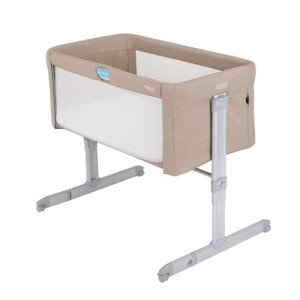Tots and Cots: A Comprehensive Guide for Parents
When it pertains to making sure a safe and comfortable sleeping environment for children and young children, the options parents make-- varying from cribs to cots-- can substantially impact their wellness. Best Cot dives deep into the complexities of picking the very best sleeping arrangements for tots, emphasizing security, style, performance, and how these choices evolve as a child grows.
Comprehending Tots and Cots
Tots typically describe young kids, particularly toddlers aged in between 1 to 3 years, while cots are the sleeping arrangements specifically created for infants and toddlers. The proper sleeping devices for this age group includes different types of cots, cribs, and young child beds.
Kinds of Cots
Numerous designs exist to fulfill the varied requirements of both parents and children. Below is a list outlining the most typical kinds of cots readily available:
Standard Crib
- A conventional crib is created for infants and generally includes sides that can be adjusted to different heights.
Convertible Crib
- This kind of crib can transform into a toddler bed, daybed, or full-sized bed as the child grows, making it a long-lasting financial investment.
Portable Crib
- Likewise referred to as travel cots, these are lightweight and easily collapsible, perfect for taking a trip or smaller living spaces.
Co-Sleeper
- A co-sleeper crib connects to the side of the parents' bed, enabling easy access while ensuring the baby has a different and safe sleeping space.
Young child Bed
- A toddler bed is a little bed that resembles a basic bed but is developed specifically for toddlers, usually including safety rails.
Mini Crib
- Mini cribs are smaller than standard cribs, making them a terrific choice for tight areas, but they appropriate for infants just.
Safety Considerations
Making sure safety is vital when choosing a cot for a kid. Here are crucial safety standards parents must think about:
- Check for CPSC Certification: Ensure that the cot follows the Consumer Product Safety Commission (CPSC) requirements.
- Prevent Drop-Sides: Cots with drop-sides have been connected to safety hazards, and the newest safety regulations prohibit them.
- Utilize a Firm Mattress: A company bed mattress lowers the threat of suffocation and must fit snugly within the cot.
- Keep Bedding Simple: Use a fitted sheet and avoid pillows, comforters, and packed animals that can pose suffocation dangers.
- Follow Weight and Age Guidelines: Ensure the child has not exceeded the cot's weight limit and is still within the advised age.
Transitioning from a Cot to a Toddler Bed
The shift from a cot to a toddler bed can be an emotional turning point for both parents and children. Here are steps to relieve the shift:
Timing
Choosing when to shift can be subjective, but it's generally advised to make the switch in between 18 months and 3 years, based upon factors like:
- Physical Ability: If the child is climbing up out of the cot.
- Potty Training: Consider transitioning if the child is toilet training and requires easier access.
- Habits: Exhibiting signs of maturity, such as following guidelines or expressing a desire for self-reliance.
Tips for Making the Transition Smooth
- Include Your Child: Let the kid choose their new bedding or bed design to impart excitement about the change.
- Keep Routine Consistent: Maintain the kid's bedtime regimen to offer comfort during this duration of change.
- Explain the Change: Discuss the transition to a young child bed favorably, making it sound like an excellent adventure.
- Precaution: Place the bed versus the wall or use bed rails to prevent falling throughout sleep.
Picking the Right Bed
When picking a young child bed, moms and dads need to consider factors like:
- Height: Low-profile beds are ideal for young children who might fall out throughout sleep.
- Resilience: Ensure the bed can withstand active play in addition to sleep.
- Design and style: Choose a style that complements the kid's room and is appealing to the kid.
Choosing the ideal cot for your kid can be a complicated process, however understanding the alternatives offered, essential safety factors to consider, and the best timing for transitioning to a toddler bed can make this journey much easier for parents. Cots For Sale and effort into these decisions will make sure that your child has a safe, comfortable, and supporting sleep environment.
FAQs
1. What is the difference in between a cot and a crib?
- A cot is usually a smaller bed developed for more youthful young children, while a crib is a larger bed that is generally suitable for babies as much as 3 years of ages.
2. When should I move my kid from a crib to a toddler bed?
- The transition time is normally in between 18 months and 3 years; this change is based upon the kid's physical capabilities and behavioral signs.
3. How can I ensure my child is safe while sleeping?
- Constantly stick to security standards, utilize a company mattress with a basic bedding arrangement, and keep an eye on the cot's weight limit.
4. What should I do if my child tries to climb up out of the cot?
- If your child is climbing out, it may be time to think about transitioning to a toddler bed to avoid falls.
5. Can I utilize the same mattress when transitioning?
- Usually, it is best to change the crib mattress with one that is particular to the toddler bed. Ensure it fits snugly and follows safety standards.
By thinking about these aspects, parents can model healthy sleep practices and supply their children with a secure environment that promotes relaxing sleep. Purchasing quality sleeping plans will add to the child's total advancement and joy.

